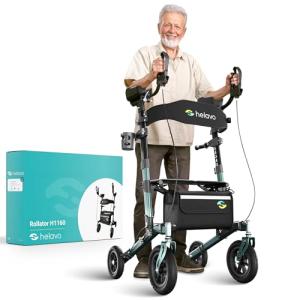Understanding Mobility Aids: Enhancing Independence and Quality of Life
Mobility aids play an important role in supporting individuals with minimal mobility, enabling them to carry out daily activities with greater ease and improving their quality of life. These gadgets range from simple tools to more complicated equipment, each developed to fit particular needs and supply assistance in various contexts. This blog post will delve into the types of mobility help readily available, their advantages, and essential factors to consider for selection.
What Are Mobility Aids?
Mobility aids are gadgets designed to assist individuals in moving around more successfully and securely, whether in their homes, communities, or health care settings. They help in reducing the risk of falls, promote self-reliance, and boost the general lifestyle for those with mobility challenges due to age, impairment, or short-lived injuries.
Common Types of Mobility Aids
The range of mobility help available can be frustrating. Below is a comprehensive table that lays out the most common types, their features, and typical usage cases.
| Type of Mobility Aid | Description | Typical Use Cases |
|---|---|---|
| Wheelchairs | Wheeled gadgets for people not able to stroll; can be manual or electrical. | Long-lasting disabilities, post-surgical healing |
| Walkers | Frame-like devices that supply support while walking; typically includes wheels for much easier movement. | Older adults, those recovering from surgical treatment |
| Canes | Single-point or multi-point rods utilized for balance and support. | Moderate to moderate mobility concerns, instability |
| Crutches | Wisely developed support for individuals with leg injuries. | Momentary injuries, recovery from surgery |
| Scooters | Motorized mobility aids for outdoor usage or long distances. | Chronic conditions that limit walking capacity |
| Lift Chairs | Recliner chairs that can raise users for easier standing. | Minimal strength or balance, elderly individuals |
| Home Modifications | Structural changes such as ramps and get bars to enhance access. | Different levels of mobility problems |
The Benefits of Mobility Aids
Mobility aids provide many advantages to users:
- Enhanced Independence: Users can move more easily, minimizing their reliance on caregivers.
- Increased Safety: Aids like walkers and walking canes assist preserve balance and minimize fall threats, which is particularly vital for elderly users.
- Improved Quality of Life: With higher mobility, users can engage more fully in social, leisure, and individual activities.
- Increased Accessibility: Mobility aids can assist users browse their homes and neighborhoods better, resulting in enhanced access to vital services.
- Pain Relief: By offering support while walking or standing, mobility aids can ease some pain related to conditions like arthritis.
Factors to consider for Choosing the Right Mobility Aid
Choosing the proper mobility aid typically requires mindful consideration. Here are some important aspects to remember:
- Level of Mobility: Different help deal with various levels of mobility. Examine the individual's strength and balance to identify the most ideal option.
- Weight Capacity: Ensure the selected gadget supports the user's weight.
- User Environment: Consider where the mobility aid will be used, such as inside your home, outdoors, or in congested areas.
- Alleviate of Use: The device should be easy to run for the individual, taking into consideration their strength and dexterity.
- Storage and Transportation: Consider how the mobility aid will be carried, particularly if it is used outside the home.
- Expense and Insurance Coverage: Factor in the rate of the gadget and inspect if insurance can assist cover the expense.
Often Asked Questions (FAQ)
Q1: How do I know which mobility aid is best for me?A1: Consultation with a health care company is suggested. Mobility Aid For Elderly can assess your specific requirements and advise suitable aids based on your mobility level, health condition, and living environment.
Q2: Are mobility aids covered by insurance?A2: Many insurance plans do cover mobility help, however protection varies substantially. Contact your insurance service provider concerning specifics.
Q3: Can mobility help be leased?A3: Yes, many medical supply companies use rental alternatives for mobility help, which can be a cost-efficient solution for short-lived needs.
Q4: How can I ensure my mobility aid is maintained?A4: Regular maintenance is vital for security and longevity. Follow the manufacturer's guidelines for upkeep and take it for regular expert checks.
Q5: What adjustments can be made to homes for better mobility?A5: Ramps, grab bars, and non-slip flooring are all crucial modifications that can boost security and ease of access for users of mobility aids.
Mobility aids are important tools that empower people with limited mobility. By enhancing independence and promoting safety, these aids substantially enhance the quality of life for users. When choosing a mobility aid, it is crucial to think about specific requirements, preferences, and environments to make the most of advantages. Consulting a healthcare specialist can assist navigate the alternatives available. As society continues to prioritize ease of access, having actually notified discussions about mobility aids will make sure that individuals can lead fuller, more independent lives.
In the grand scheme, mobility aids are not just physical gadgets; they are keys to opening a world of possibilities and encourage active participation in life. From wheelchairs to walking sticks, each aid offers special benefits developed to satisfy the varied requirements of users, cultivating a much better, more inclusive community.

